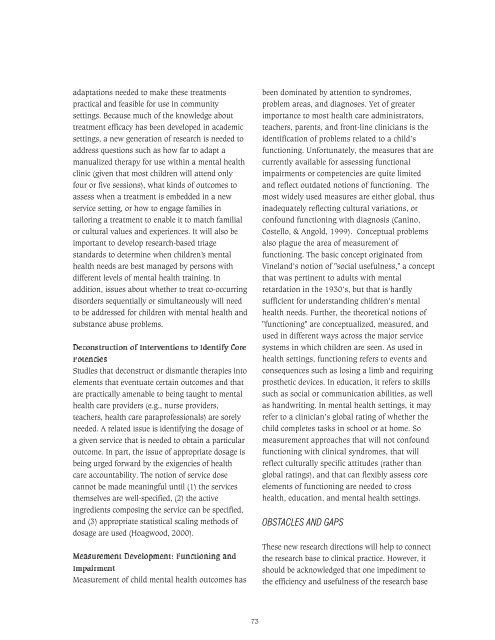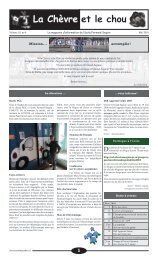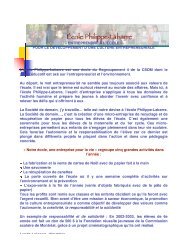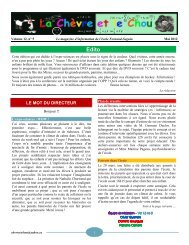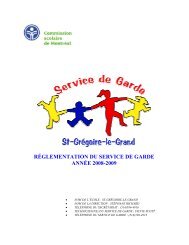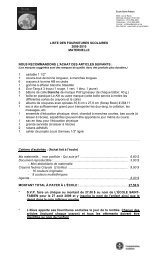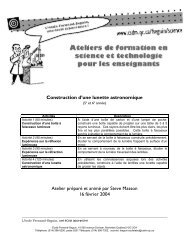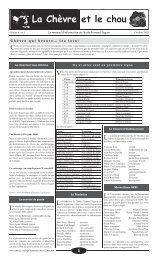Research on Child and Adolescent Mental Health
Research on Child and Adolescent Mental Health
Research on Child and Adolescent Mental Health
Create successful ePaper yourself
Turn your PDF publications into a flip-book with our unique Google optimized e-Paper software.
adaptati<strong>on</strong>s needed to make these treatments<br />
practical <strong>and</strong> feasible for use in community<br />
settings. Because much of the knowledge about<br />
treatment efficacy has been developed in academic<br />
settings, a new generati<strong>on</strong> of research is needed to<br />
address questi<strong>on</strong>s such as how far to adapt a<br />
manualized therapy for use within a mental health<br />
clinic (given that most children will attend <strong>on</strong>ly<br />
four or five sessi<strong>on</strong>s), what kinds of outcomes to<br />
assess when a treatment is embedded in a new<br />
service setting, or how to engage families in<br />
tailoring a treatment to enable it to match familial<br />
or cultural values <strong>and</strong> experiences. It will also be<br />
important to develop research-based triage<br />
st<strong>and</strong>ards to determine when children’s mental<br />
health needs are best managed by pers<strong>on</strong>s with<br />
different levels of mental health training. In<br />
additi<strong>on</strong>, issues about whether to treat co-occurring<br />
disorders sequentially or simultaneously will need<br />
to be addressed for children with mental health <strong>and</strong><br />
substance abuse problems.<br />
Dec<strong>on</strong>structi<strong>on</strong> of Interventi<strong>on</strong>s to Identify Core<br />
Potencies<br />
Studies that dec<strong>on</strong>struct or dismantle therapies into<br />
elements that eventuate certain outcomes <strong>and</strong> that<br />
are practically amenable to being taught to mental<br />
health care providers (e.g., nurse providers,<br />
teachers, health care paraprofessi<strong>on</strong>als) are sorely<br />
needed. A related issue is identifying the dosage of<br />
a given service that is needed to obtain a particular<br />
outcome. In part, the issue of appropriate dosage is<br />
being urged forward by the exigencies of health<br />
care accountability. The noti<strong>on</strong> of service dose<br />
cannot be made meaningful until (1) the services<br />
themselves are well-specified, (2) the active<br />
ingredients composing the service can be specified,<br />
<strong>and</strong> (3) appropriate statistical scaling methods of<br />
dosage are used (Hoagwood, 2000).<br />
Measurement Development: Functi<strong>on</strong>ing <strong>and</strong><br />
Impairment<br />
Measurement of child mental health outcomes has<br />
been dominated by attenti<strong>on</strong> to syndromes,<br />
problem areas, <strong>and</strong> diagnoses. Yet of greater<br />
importance to most health care administrators,<br />
teachers, parents, <strong>and</strong> fr<strong>on</strong>t-line clinicians is the<br />
identificati<strong>on</strong> of problems related to a child’s<br />
functi<strong>on</strong>ing. Unfortunately, the measures that are<br />
currently available for assessing functi<strong>on</strong>al<br />
impairments or competencies are quite limited<br />
<strong>and</strong> reflect outdated noti<strong>on</strong>s of functi<strong>on</strong>ing. The<br />
most widely used measures are either global, thus<br />
inadequately reflecting cultural variati<strong>on</strong>s, or<br />
c<strong>on</strong>found functi<strong>on</strong>ing with diagnosis (Canino,<br />
Costello, & Angold, 1999). C<strong>on</strong>ceptual problems<br />
also plague the area of measurement of<br />
functi<strong>on</strong>ing. The basic c<strong>on</strong>cept originated from<br />
Vinel<strong>and</strong>’s noti<strong>on</strong> of "social usefulness," a c<strong>on</strong>cept<br />
that was pertinent to adults with mental<br />
retardati<strong>on</strong> in the 1930’s, but that is hardly<br />
sufficient for underst<strong>and</strong>ing children’s mental<br />
health needs. Further, the theoretical noti<strong>on</strong>s of<br />
"functi<strong>on</strong>ing" are c<strong>on</strong>ceptualized, measured, <strong>and</strong><br />
used in different ways across the major service<br />
systems in which children are seen. As used in<br />
health settings, functi<strong>on</strong>ing refers to events <strong>and</strong><br />
c<strong>on</strong>sequences such as losing a limb <strong>and</strong> requiring<br />
prosthetic devices. In educati<strong>on</strong>, it refers to skills<br />
such as social or communicati<strong>on</strong> abilities, as well<br />
as h<strong>and</strong>writing. In mental health settings, it may<br />
refer to a clinician’s global rating of whether the<br />
child completes tasks in school or at home. So<br />
measurement approaches that will not c<strong>on</strong>found<br />
functi<strong>on</strong>ing with clinical syndromes, that will<br />
reflect culturally specific attitudes (rather than<br />
global ratings), <strong>and</strong> that can flexibly assess core<br />
elements of functi<strong>on</strong>ing are needed to cross<br />
health, educati<strong>on</strong>, <strong>and</strong> mental health settings.<br />
OBSTACLES AND GAPS<br />
These new research directi<strong>on</strong>s will help to c<strong>on</strong>nect<br />
the research base to clinical practice. However, it<br />
should be acknowledged that <strong>on</strong>e impediment to<br />
the efficiency <strong>and</strong> usefulness of the research base<br />
73


